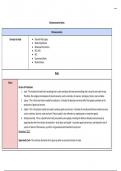Summary
Summary IB HL Micro Economics Notes
- Course
- Economics
- Institution
- 12th Grade
These notes provide an in depth level of content on micro economics. With these notes I was able to achieve a 6 in HL economics which is equivalent to a 96%.
[Show more]



